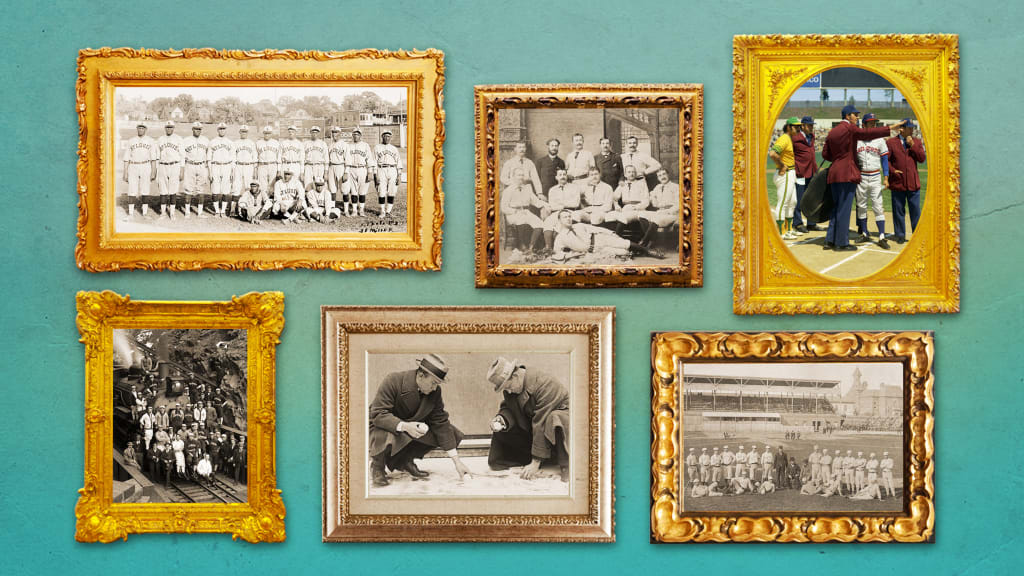
Baseball is a game of motion, of curves darting into the dirt; of infielders crouching on their toes, ready to leap into action; of batters pulling their weight back before firing forward, their hips twisting and the bat slashing through the air. But while the game may be one of constant movement, many of the biggest and most cherished moments are best captured by a static photograph.
We remember the smiling faces atop baseball cards or the images splashed across the front pages of sports sections long before the internet gave us access to instantaneous highlights. Even recent events, like José Bautista launching his bat into the stratosphere in 2015, is best remembered by the photograph.
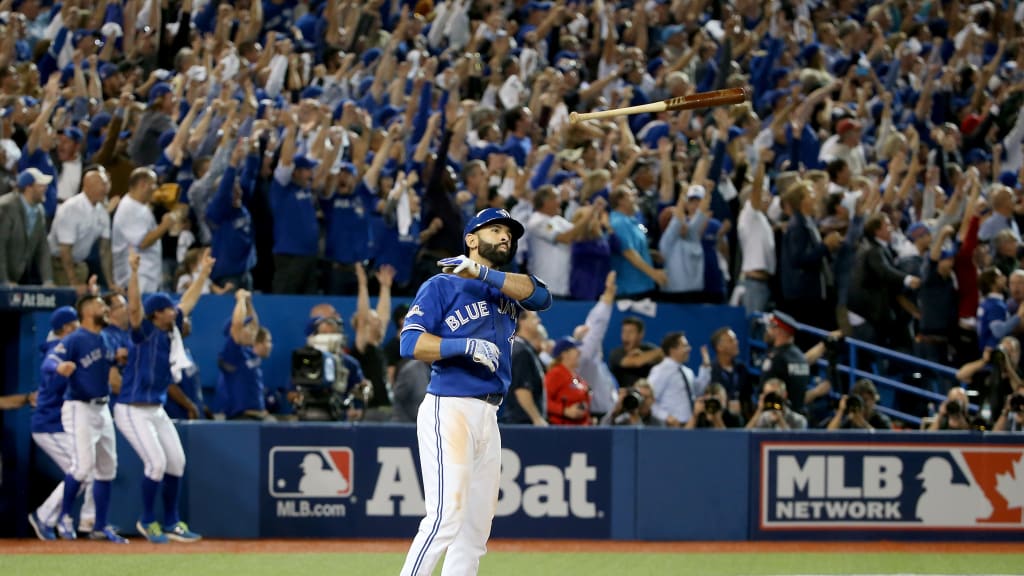
But how does one go about assembling a collection featuring some of the greatest baseball photos? How does a person even begin to whittle down the list? For the National Baseball Hall of Fame and Museum's recent book, "Picturing America's Pastime" -- an update and expansion from an exhibit that was previously on display -- that task fell to senior curator Tom Shieber and a team of the museum's very best.
It wasn't easy. The Hall of Fame has some 350,000 photos in its archives, inspiring thoughts of Hall employees walking through the air hangar at the end of "Raiders of the Lost Ark," while searching for just the right image. Fortunately, Shieber has been working in baseball and the museum business for some 40-odd years and has a passion for baseball imagery.
"Some of [the selections were] like, 'I know this image. Do we have this in our collection because I think it would be a great image to use.' And that was true for the exhibit as well as for the book," Shieber said in a recent Zoom interview. "When we did the exhibit, I had already been here for quite a few years. I had gotten somewhat familiar with the collection -- certainly haven't seen all of the 350,000 images, but I've seen a good number. And then there was a certain amount of going through and looking for something. Maybe I had a general idea and I'd look in the logical places, like, I want to get a good World Series image, but it was not by going through every single image."
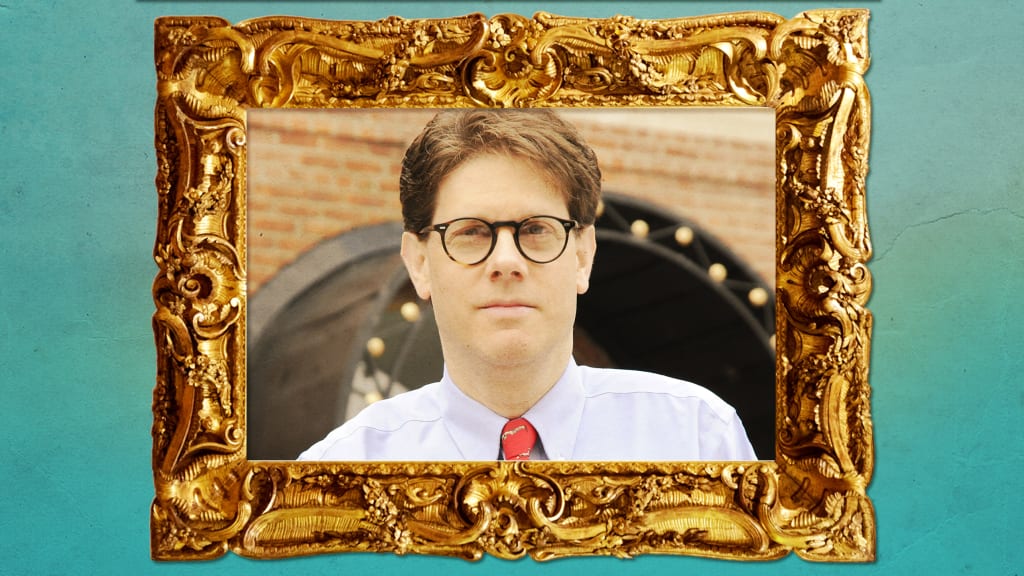
Next, the team had to come up with a system to inform its decisions. The book isn't meant to be an illustrated baseball history, nor was it one that just showed off great photos.
"The guideline was true for both the exhibit and the book, it was consistent across both forms of storytelling," Shieber said. "And that was the image needs to be a beautiful photograph in and of itself. That was number one and a very close number two -- and you had to have one and two -- there had to be a good story to tell."
Flip through the book and you'll see that while every image has an actual brief accompanying story, the photo also contributes its share to the tale.
Finally, the photo had to be in the Hall's massive collection.
"We wanted to make sure people understood we have a stunning collection of baseball images that a lot of people don't think about so much," Shieber said. "They should know that we have this very large treasure at this institution. And so for the exhibit, specifically, I really wanted to say, 'Hey, this is from our collection. This is not the greatest photos in all of baseball history, or the greatest players or whatever. It's a snapshot look -- sorry about the pun -- but a snapshot look at the breadth and depth of our collection, and how rich the stories are and how wonderful the images are."
Some were from big contests, as fans tried their best to get a peak of the action during the 1903 World Series:
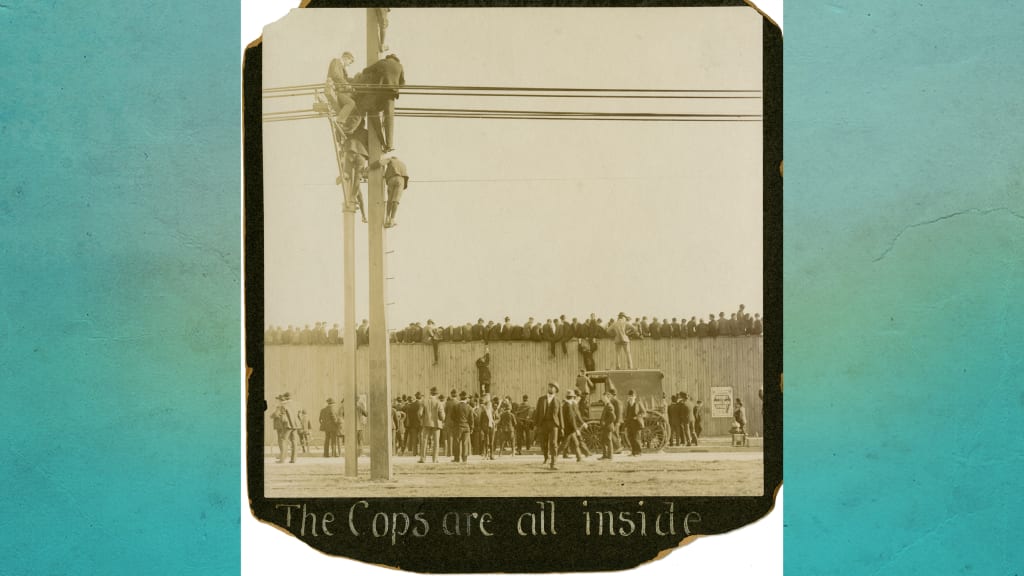
Others simply had to be included simply because they are so marvelous to look at, like this photo of the Chicago White Sox on the Royal Gorge Hanging Bridge while on their way to Spring Training in San Francisco in 1910. (Click here to see image in larger size.)
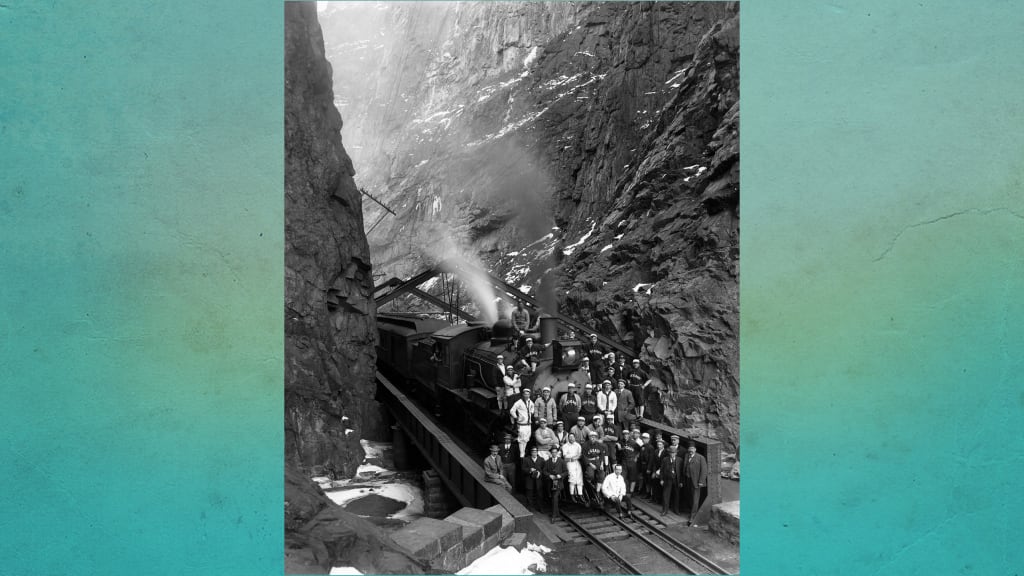
Still others were chosen simply to highlight the mundane yet strangely beautiful moments that often get overlooked, like when the lineup cards are exchanged.
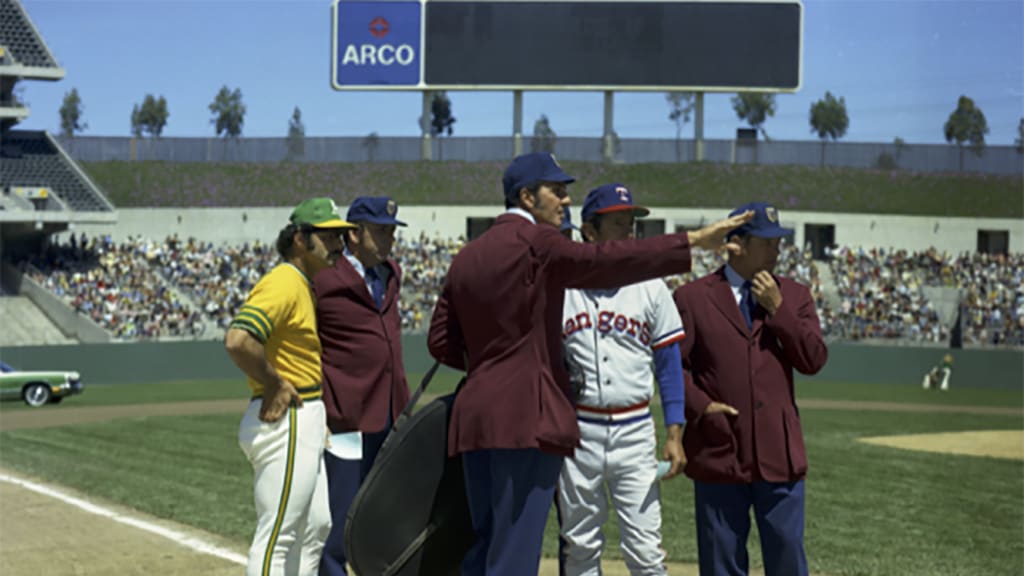
"I really liked that photo because it's a sort of a normal moment that we can ignore," Shieber said. "I like to think about these parts of baseball that are somehow forgotten about because they happen all the time and they're probably not particularly well covered on TV. I thought that did a wonderful job of it and it showed these great 1970s maroon outfits for the umpires."
But Shieber really gets excited when he can put on his detective's cap and solve some photographic mysteries. One example comes courtesy of a photo featuring the Boston Red Stockings and Providence Grays in 1879. Shieber started by asking himself why that photo was even taken.
"You don't ask yourself that now because everybody has a camera with them at all times," Shieber said.

Back then, though, it was a big deal to get a photo. Someone carrying large and cumbersome equipment had to be sent out specifically to get the picture.
"I knew that Boston was the previous pennant winner, and I knew Providence was the pennant winner for 1879," Shieber explained. "And I thought, well, why would you take this photo? Maybe that's not a coincidence. So I thought, 'Well, when did Providence clinch the pennant? Oh, my God. It's when Boston happened to be in town.' And then I went to the newspapers, and I started reading articles. Darn if I didn't find an article that says, 'And then they rounded them all up, and we took some photos.'"
Shieber then showed just how deep you can go down the rabbit hole -- and some of the unexpected things you can find -- while researching a photo featuring the St. Louis Giants of the Negro National League.
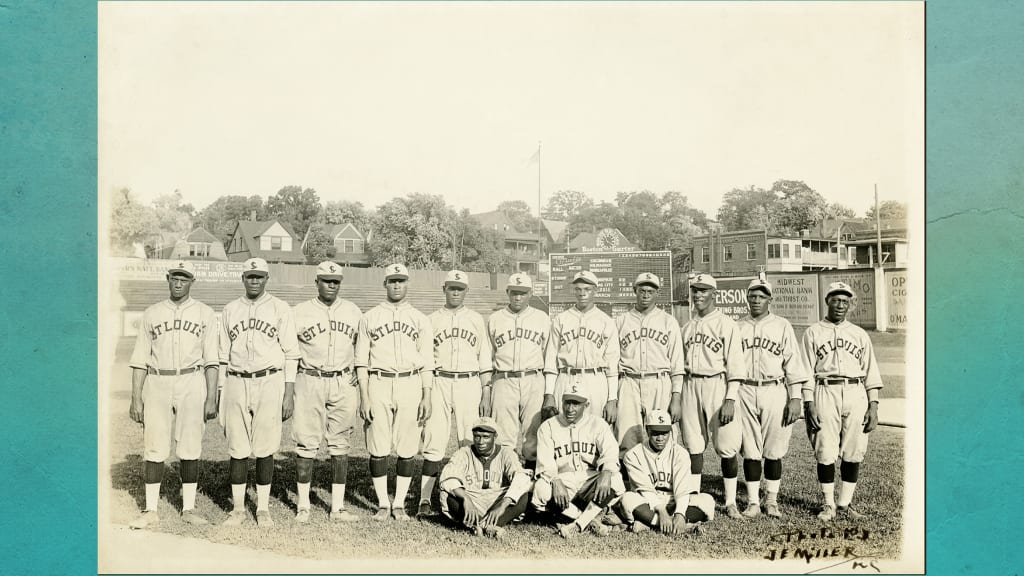
"All we knew was it was the St. Louis Giants in 1920," Shieber said. "I was able to figure out the exact date by, first of all, look at the scoreboard in the background and you can figure out when did these teams match up. And then also you can figure out the location because there's advertising on the outfield walls. There's an advertisement for a bank in Kansas City and, well, a bank in Kansas City's not taking out an ad on a wall in Indianapolis or something. And then I figured out the park that they played in. Then I went to Google Maps, and I made sure that the shadows were in the right direction, just to double check, and they did."
Shieber continued his time travel sleuthing by then getting on Google Streetview and he was able to find that the building next to the scoreboard still exists today. Then he made a really fun discovery: The building where photographer James E. Miller -- who took this photo and was a noted Negro Leagues photographer -- worked and likely developed this picture? That block is where the Negro Leagues Museum stands today.
You can watch Shieber explain his research on this photo in further detail below:
Flip through the book and you'll likely find your own surprises from baseball history -- whether it's a photo of the irascible Ty Cobb making snowballs or of baseball players wearing roller skates.

That was all by design, as Sheiber wanted to create a book that had no order to follow, allowing the reader to be curious about what was beyond each page turn.
"When you're in an exhibit, you can see multiple images at once," Shieber said. "In the book -- I guess you can kind of flip pages if you want to -- there's certainly no order to go through. I fought hard for that. It makes sense to not put it in chronological order or put it in thematic order. It really should seem like I have no clue what's going to happen next."
